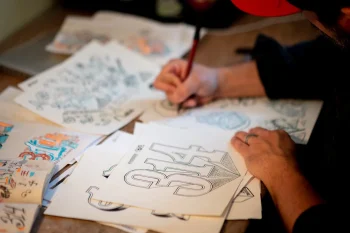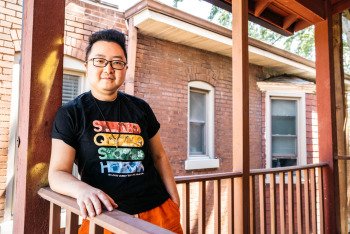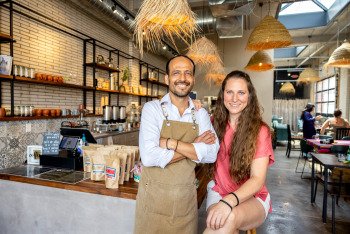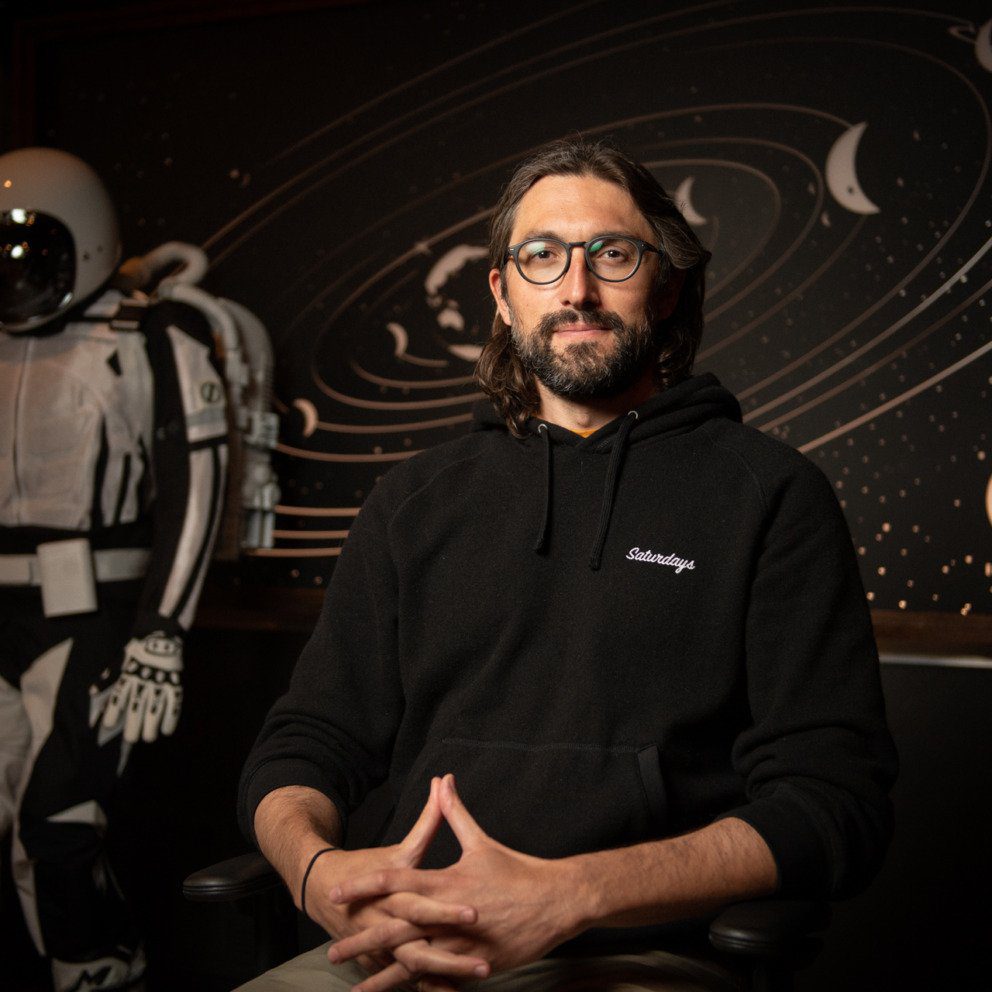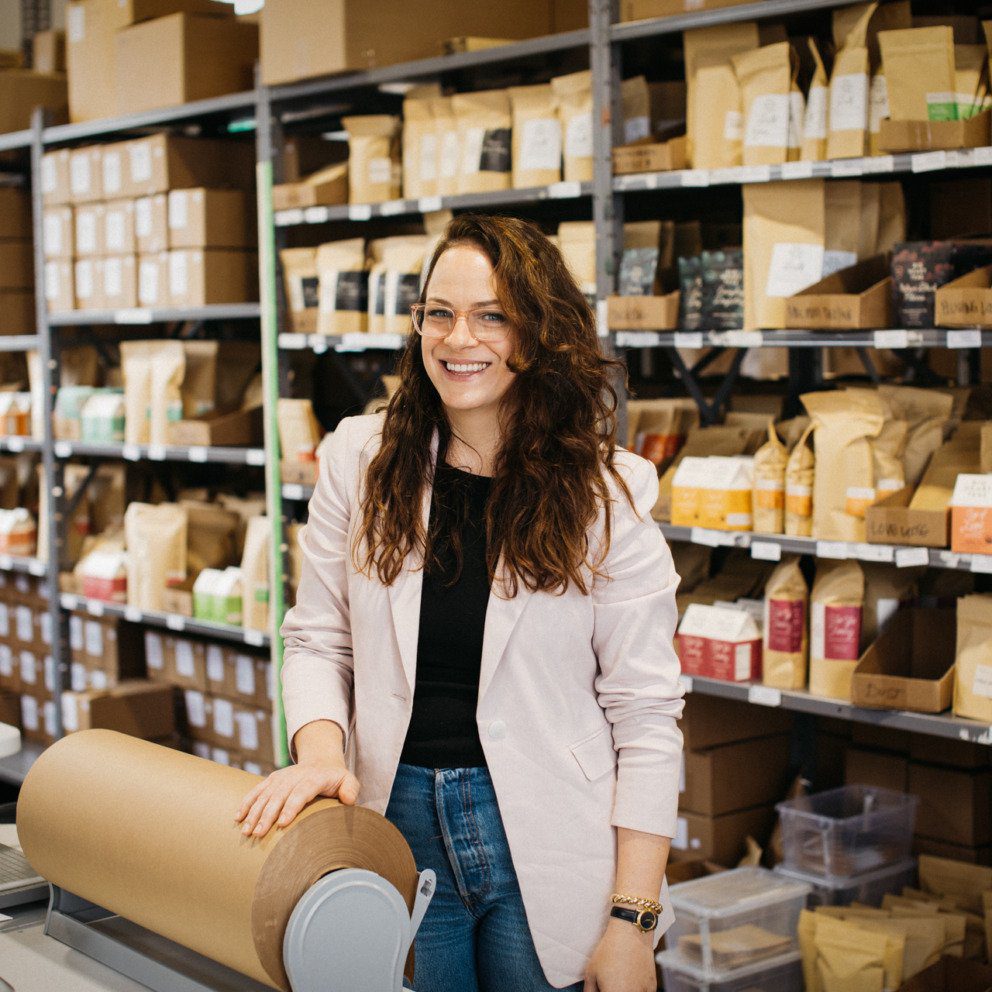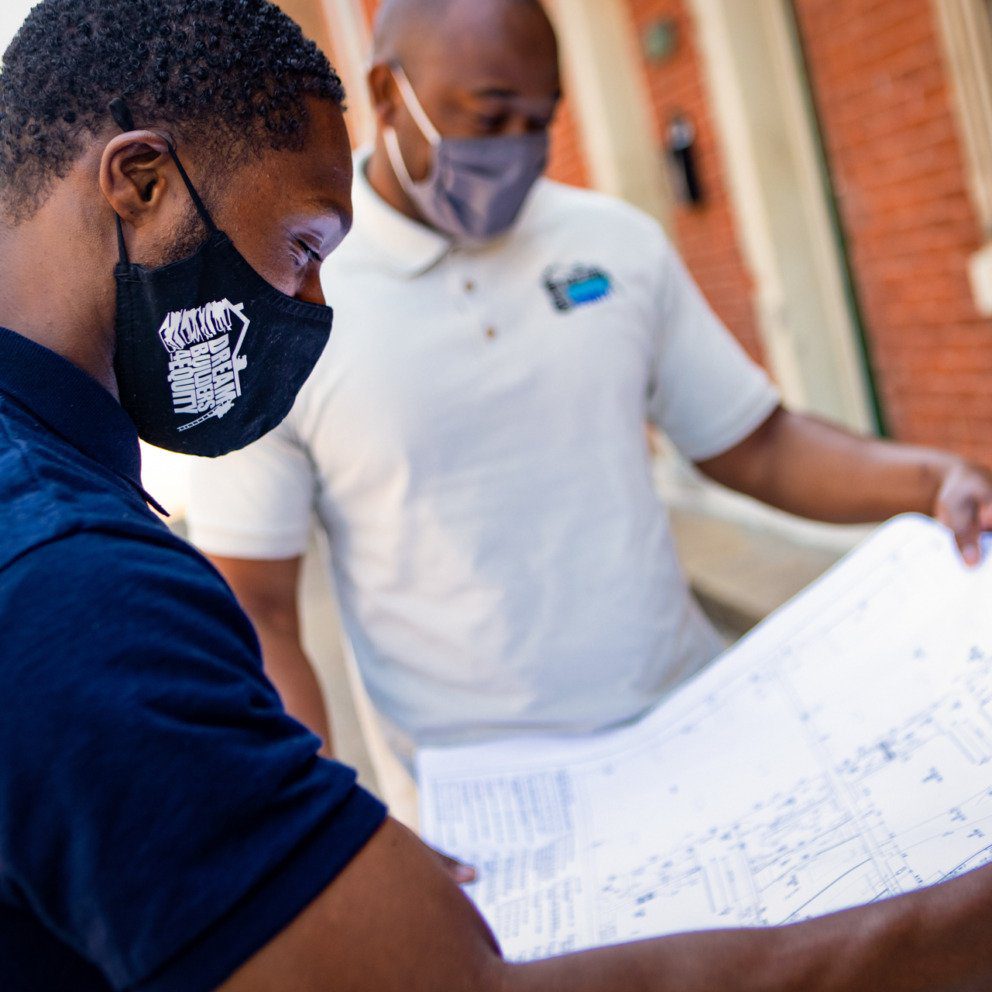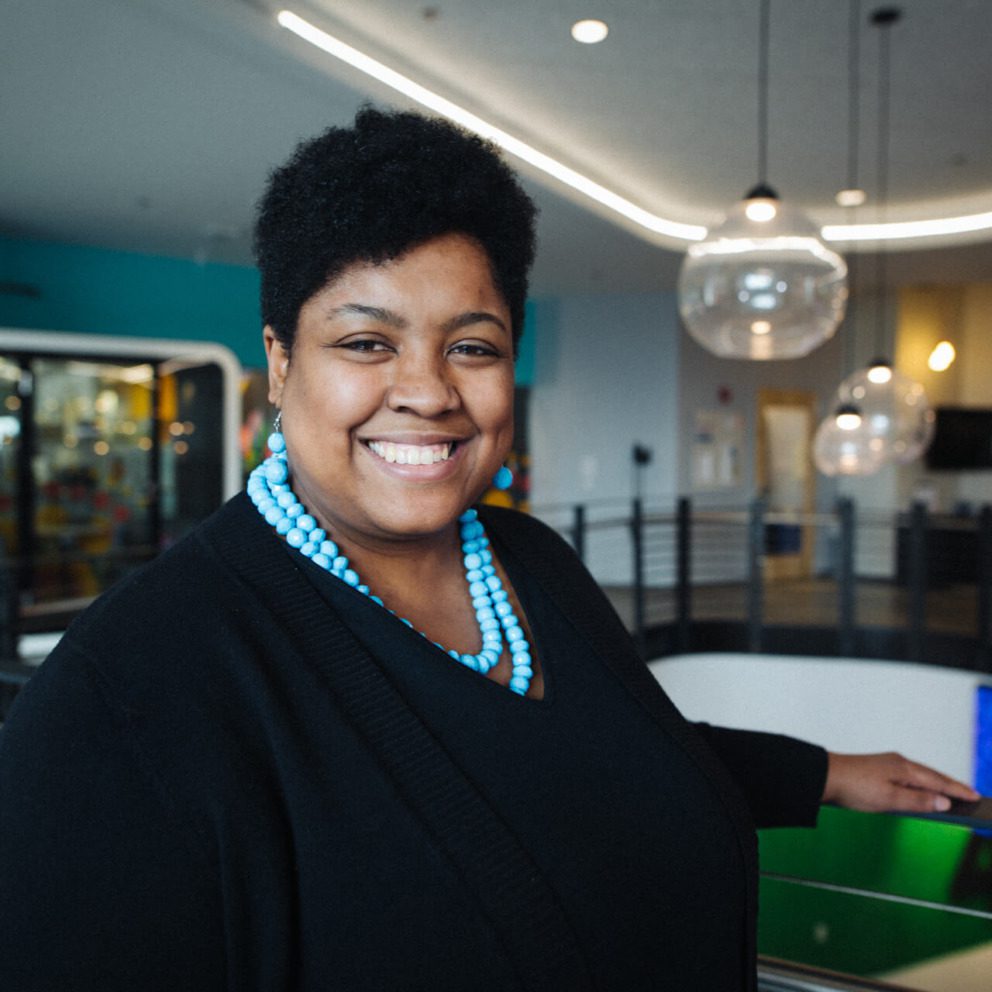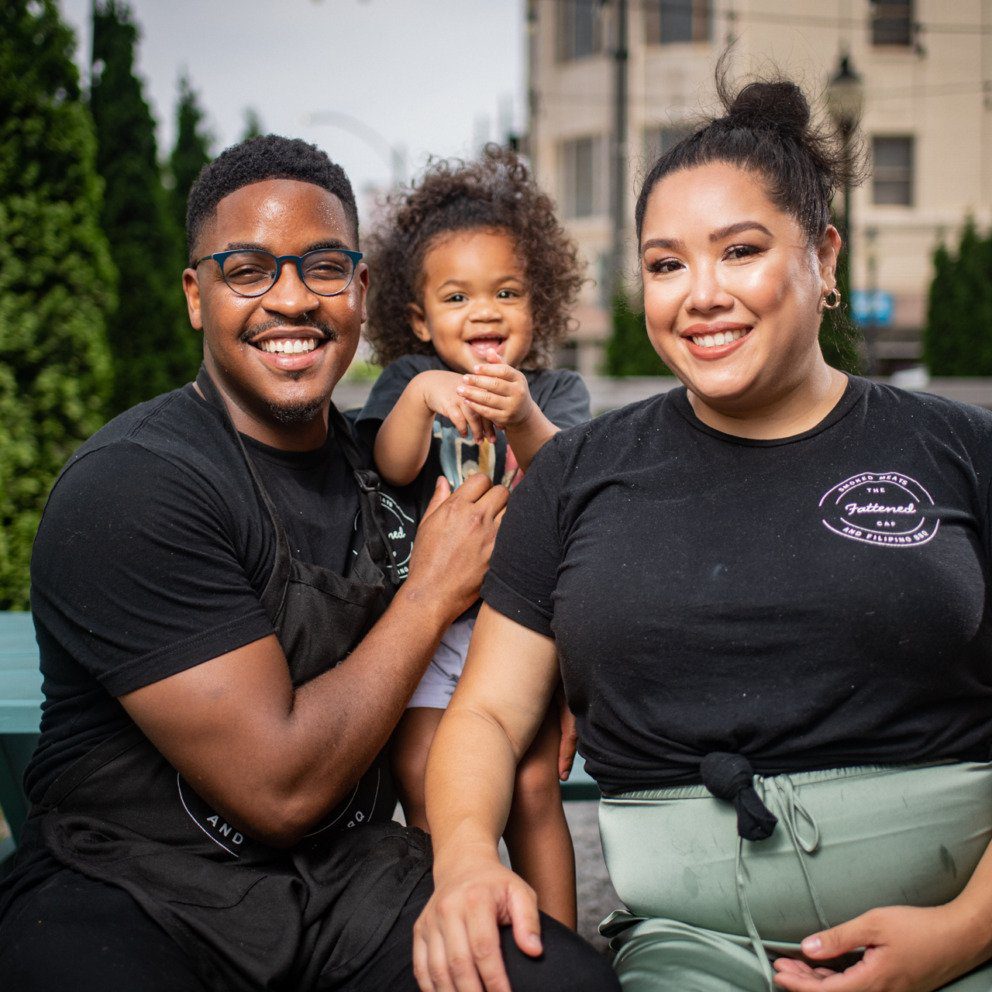Building Space to Grow
Jason Deem opened St. Louis’ first coworking space, Nebula, more than 10 years ago, and continues to restore and develop Gravois Park through South Side Spaces.
St. Louis’ first coworking space, Nebula, sprawls throughout 30,000 square feet and across multiple buildings on Cherokee Street in Gravois Park. Inside, there’s the technology you might expect of a modern coworking facility, but there are also surprises around every corner – from murals by local artists to an antique rotary phone and switchboard, one of owner Jason Deem’s many estate sale finds that dot the space.
This blend of old and new, paying homage to local history while providing the space and network for St. Louisans to connect and move their ventures forward, is befitting of Deem’s vision for the street, the neighborhood and the city.
While Cherokee Street is now known as a thriving hub for artists, creatives and community organizations, not to mention its many Latin American restaurants, it hasn’t always been this way. Jason Deem was drawn to Gravois Park and the surrounding area because it had one of the highest densities of residency in St. Louis and also one of the highest rates of vacant buildings, making it ripe with opportunity for growth – a place where he could really make an impact as a real estate developer.
“It wasn’t like there weren’t already things happening here,” he said of his move to the neighborhood more than a decade ago. “I think what I’ve seen over the last ten years is that the density has increased, but the neighborhood has remained true to itself.”
In many ways, the Nebula coworking space is a microcosm of Deem’s work at large in the area — taking vacant buildings and restoring their vibrancy while simultaneously creating smaller (read: affordable) storefronts for local business owners, giving them the opportunity to establish themselves and grow their brands.
Through his development company, South Side Spaces, Deem specializes in historic renovations. Most of the projects that South Side Spaces takes on are buildings that have sat vacant for five or more years, on the verge of becoming a lost cause. Deem’s company then gives rental preference to small, locally owned companies who contribute to the eclectic mix of businesses in the neighborhood.
A prime example of this effort is the building at 2615 Winnebago Street, just a few blocks south of Cherokee Street. That building was home to Local #4 of The Bakery, Confectionary, Tobacco Workers and Grain Millers International Union for over 60 years until a catastrophic roof collapse in 2015.
The Union was planning to demolish the building, but Deem was able to convince them to sell it and his company restored the historic structure. Now it’s home to Big Heart Tea Co., a woman-owned tea company. (Read our story on Big Heart Tea Co. here.)
“We were really excited that we were able to save the building and have a new business in there that is contributing to the neighborhood,” Deem said.
Similarly, when he took it on, the building that now houses Nebula was a deserted former probation office. Today, it spans three floors and offers a range of membership services and drop-in access as well as dedicated desks, offices and storefronts.
Prior to opening Nebula, Deem was inspired by similar coworking models he saw in other U.S. cities, and thought the concept was something St. Louisans would respond to. He was correct; once it opened, Nebula’s offices filled up quickly. Its success led Deem to expand to another building in the same block, the St. Matthews Schoolhouse, which was built in 1889.
Much like the neighborhood it calls home, Nebula’s members include a wide array of businesses and people — from designers to artists to event planners and business finance consultants. It also houses social activism organizations like Alive & Well Communities and The Education Equity Center of St. Louis, and even optical sensing start-up Impossible Sensing. (Read our story on Impossible Sensing here.)
“I’d love for people to know that it’s a creative community, and it very much reflects the surrounding Cherokee Street community,” says Deem.
With South Side Spaces, Deem also works to provide housing in the area. Many buildings in the area are home to street-level storefronts as well as a number of housing units. South Side Spaces develops them as mixed-use apartment buildings — where a portion of the apartments are affordable housing and others are rented out at market value. To encourage renters to stay in the area, Deem has also started offering tenants $1,000 toward their down payment if they buy a home in Gravois Park.
“I think we’ve already done three of those this year, converting our tenants to homeowners,” he said. “Now, that’s not great for our business, if we want a long-term renter, but it is great for the long-term stability of the neighborhood. And I think that’s much more important. We would rather see our tenants own property, than have an out-of-state investor who’s just going to wait five years and then sell the property for much more.”
South Side Spaces acquired 2755 Chippewa Street in 2017. The building was built in 1922 and eventually sat vacant for nearly two decades falling into disrepair before Deem and his crew began renovations, and in 2019, completed the work that added seven residential units and four commercial spaces to the neighborhood.
“Those are some of the things that we’re doing to help make sure that the neighborhood can grow,” says Deem, “while retaining its identity and remaining accessible to the people that live here.”
As for the future of Gravois Park and the city as a whole, Deem believes the best approach is not a big picture “silver bullet” approach, but rather investing on the ground and micro levels of smaller, local companies.
“I think the biggest thing that we can do is really make sure we’re developing equitably,” says Deem, “and making sure that a broad range of people, a broad range of organizations, have access to the resources they need to be successful and to invest in St. Louis.”
Join the Story
- Interested in checking out Nebula? Drop in on one of their First Free Fridays.
- Check out our series on another community-focused development group, Dream Builders 4 Equity: Parts One, Two and Three.

